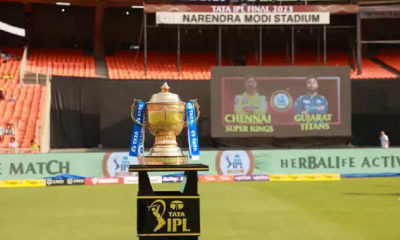Sports
An all girls cricket team in India breaks with tradition
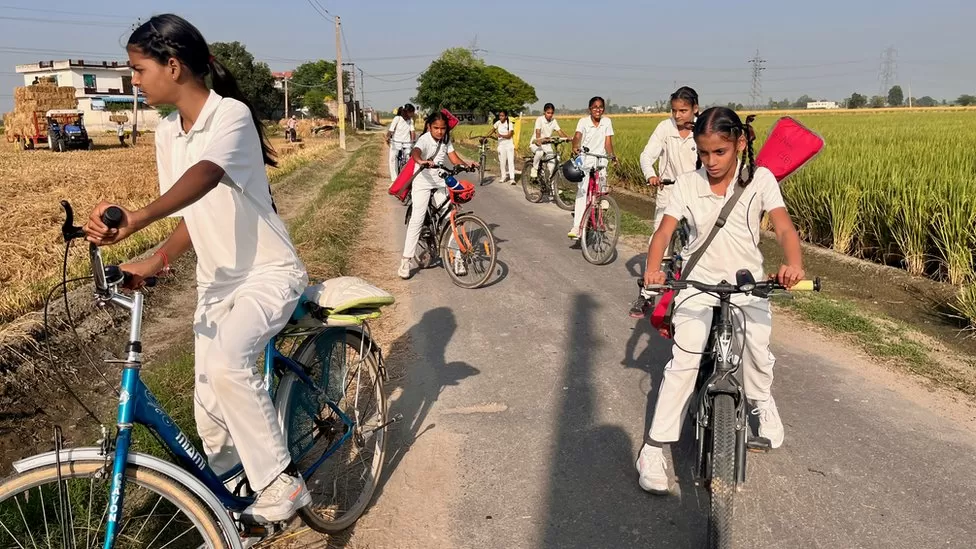
More than a dozen young girls from a small village cycle through farmland in the Indian state of Punjab.
Moving along a dirt pathway, dressed all in white, their excitement starts to build. Amid the miles of wheat fields, emerges the source of their joy: two cricket pitches, with plastic wickets and strip of concrete from where they can bat.
If it conjures images of the 1989 Hollywood film, Field of Dreams, it wouldn’t be too far from the truth. These 18 girls make up the Gulab Singh Cricket Team.
Cricket is the most popular sport in India, akin to a religion many would say. While it continues to remain a male-dominated game, things are changing.
Earlier this year, India started a women’s cricket premier league (WPL), a female version of the Indian Premier League (IPL). It has quickly become one of the world’s most lucrative women’s franchises, second only to the Women’s National Basketball Associate in the US.
Women in India have been active – and high performing – in cricket for many years. The WPL has catapulted them into mainstream popularity. Now they get the kind of media attention only reserved for men’s teams.
In October, the Board of Control for Cricket in India (BCCI), the governing body of Indian cricket. said all contracted female cricketers would be paid the the same match fee as men – a historic decision to promote “gender equality” in the country’s most-loved game.
Despite the changes on the national level, it can still be difficult for girls to be afforded the opportunity to play, especially in rural towns. “I created this cricket team to make their lives better,” says Gulab Singh Shergill, 35, who started this plucky little league four years ago.
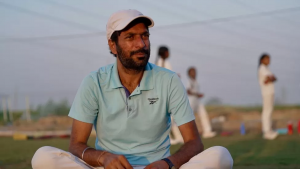
Gulab Singh Shergill started the little league four years ago (pic BBC)
Partly to live out his failed dreams of playing cricket professionally and mostly because he really believes the girls in the village deserve a shot. “They don’t get permission to get a higher education, only getting to tenth class,” he says. After that, it’s a life of cooking and cleaning until they are married and sent to live with their in-laws.
His players are being exposed to something different. Every day, they come here, park their bikes under a tree behind the batting area and head to the grassy field where they start warming up.
Simranjit Kaur, 13, is learning to bowl. She runs down the pitch, rotates her arm and lets the leather ball out of her hand. Her height allows her to get speed and she says her accuracy is starting to improve. She is quiet and soft spoken, still very much the frame of a child but has had to grow up fast. After her mother died suddenly three years ago, her grandmother has become her primary caretaker, along with her two younger sisters, aged 10 and three. She joined the team a few years ago after seeing them play in a tournament in a neighbouring village with her father, a cricket enthusiast. “My father asked me if I would like to play,” she said in the courtyard of her house. “I said yes. So he asked the coach if I could join. And he said to come the next day.”
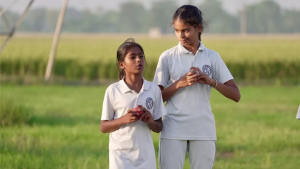
Simranjit Kaur (right) is learning to bowl (pic BBC)
In the morning before going to school, Simranjit crouches by a stove next to her grandmother, making rotis for the family. After school, instead of being stuck inside like many girls her age, with the support of her father and grandmother, she throws on her cricket whites and heads to practice, her sister in tow.
“There’s an ill thinking in villages,” says Baljeet Kaur, Simran’s grandmother. “They say that girls should be married and sent off to her in-laws, as if they have got no life. Sometimes people in village tell us why are you sending girls for playing. This is our wish and we want them to play.”
When asked how she feels when people discourage her, Simranjit says, “I don’t want to stop playing, this is my life. I feel really bad because I really like cricket, I really like playing.”
Cricket is not Shergill’s full-time job; he works as a constable in the local police force.
The players pay for nothing, he says. His entire salary goes to the girls’ team: paying for a part time coach, getting uniforms and equipment. He has donated a part of his land for the cricket pitch and hopes to build an office with a toilet one day.
It’s only been four years but in that time he’s been able to expose these girls to a life beyond the bounds of their village.
“Now we are also able to have matches between girls and boys,” he says. “That makes them proud of themselves. Now they are able to tell their parents that ‘I can do it.'”
For these girls, playing cricket is a break from the societal duties that come with being a girl. For a few hours a day, they shed gender norms and are able to be kids.
“When we are playing a match, I feel like I am wearing a jersey for Team India,” says 10-year-old Harsimrit Kaur. “When I hit a six, I know I did it for India. When I play I feel only one thing, that I am not playing for India now but I will play for India’s cricket team someday.”

Harsimrat Kaur, 10, says playing a match feels like ‘I am wearing a jersey for Team India’ (pic BBC)
Shergill has the support of strong women too. His eldest sister, Jasveer Kaur, affectionately called Bua, is one of Shergill’s biggest champions. She comes to the pitch at least once a week to comfort players that get hurt or just to watch. She knows too well the pressures of being a woman in this society.
Married at 19, becoming a mother shortly thereafter, Jasveer cries at the thought of any of these girls meeting the same fate. “All my feeling and hopes were suppressed because I was a woman,” she says. “I was asked to work at home and cook also. Now I want that if I can help girls to do something I don’t need anything else in life. I want to use all my power to help girls grow.”
Shergill may be selling a dream to become a professional cricket player and represent India around the world. But the lessons he is teaching the these young women is so much more valuable.
“There is no difference between a girl and a boy,” says Simranjit. “Whatever boys can do, girls can do too.”
(BBC)
Sports
England face Australia in the battle of champions
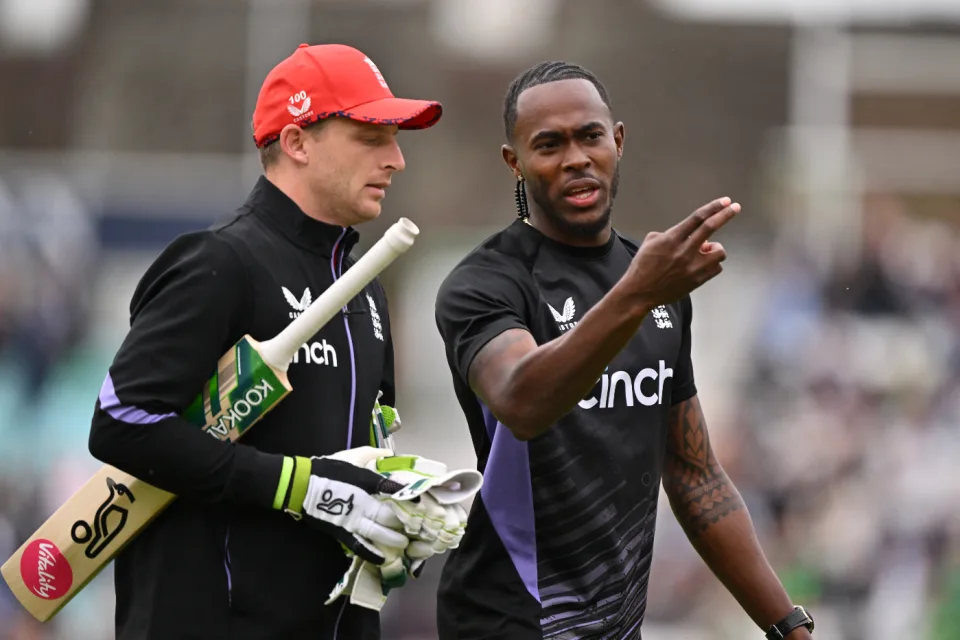
The first truly heavyweight clash of this expanded T20 World Cup format comes freighted with both history and subplots. A rematch of the 2010 World T20 final at Kensington Oval, the match pits Jos Buttler’s defending champions – who are aiming to become the first team to retain the trophy – against the Australian winning machine, victors at the 2021 edition and current world title-holders in Test and ODI cricket. And that’s before you throw in the Ashes for afters.
Already there is added pressure on England, after the rain in Bridgetown led to a share of the points in their opener against Scotland (and that having conceded 90 runs from 10 overs without taking a wicket in a tepid bowling display). Lose to their oldest rivals and it will leave their Super 8 prospects open to being waylaid by the perils of net run-rate calculations, or worse.
The Scotland match was the third abandonment in five suffered by England, after a rain-affected home series against Pakistan, which has clearly hampered their readiness for this campaign after almost six months without playing T20 together. It does not take much for a side to click in this format – and England looked in decent shape when they did get on the field against Pakistan – but Buttler will be anxious for things to go their way on Saturday, if only to avoid further questions referencing the team’s disastrous ODI World Cup defence last year.
Australia, under the laidback leadership of Mitchell Marsh would love nothing more than to add to the English sense of jeopardy – having helped bundle them out of the tournament in India on the way to taking the crown. Their head to head record is less impressive in T20 however, with England having won six of the last seven completed encounters, as well as that 2010 final.
Despite a wobble with the bat, Australia avoided mishap against Oman earlier in the week, the experience of David Warner and Marcus Stoinis shining through in difficult batting conditions. Surfaces in the Caribbean – not to mention those games staged in the USA – have already had teams scratching their heads; rather than the “slug-fest” England had prepared for, following a high-scoring tour of the Caribbean in December, it looks as if boxing smart may be the way to go.
Speaking of Warner, this could be the last time he faces up against England in national colours – and another match-winning contribution would likely reduce the chances of them meeting again in the knockouts. On the other side of the card is Jofra Archer, fresh from an emotional maiden outing at Kensington Oval and ready to take on Australia for the first time in any format since 2020. Can Mark Wood fire up England’s campaign, as he did during last summer’s Ashes? Will Pat Cummins be back to harass the old enemy once again? Seconds out, it’s almost time to rumble.
Cummins is set to return after being rested for the Oman game, which saw Mitchell Starc leave the field with cramp. Starc is understood to be fine and could keep his place – which would likely see Nathan Ellis miss out. Marsh is still not fit to bowl, with Australia likely to continue with the allrounder combination of Stoinis and Maxwell to give them cover.
Australia (probable XI): David Warner, Travis Head, Mitchell Marsh (capt), Glenn Maxwell, Marcus Stoinis, Josh Inglis (wk), Tim David, Pat Cummins, Nathan Ellis/Mitchell Starc, Adam Zampa, Josh Hazlewood
The one change England may consider is Reece Topley coming in for Wood, with the expectation that there will be some rotation among the seamers through the course of the tournament.
England (probable XI): Phil Salt, Jos Buttler (capt & wk), Will Jacks, Jonny Bairstow, Harry Brook, Liam Livingstone, Moeen Ali, Chris Jordan, Jofra Archer, Adil Rashid, Reece Topley/Mark Wood
[Cricinfo]
Sports
South Africa up against their bogey team in batter-unfriendly New York

Once is coincidence, twice is a clue, and three times is proof.
To paraphrase Agatha Christie, that is the narrative around South Africa’s meeting with Netherlands at this T20 World Cup.
The Dutch beat South Africa at the 2022 tournament and ended their semi-final hopes in a match where South Africa appeared to be sleep walking, and then beat them again at the 2023 ODI World Cup, where they exposed South Africa’s vulnerability in the chase. If they to do the treble, not only will Netherlands take the lead in Group D, but they will offer conclusive evidence of the threat they pose to Full Members, especially South Africa.
Of course, it will take some doing after South Africa’s opening performance against Sri Lanka, where they reduced their opposition to their lowest T20I total and chased it down in fairly straightforward fashion thanks to the most stable middle-order of their white-ball era. In Aiden Markram, Tristan Stubbs, Heinrich Klaasen and David Miller, South Africa have bankers and big-hitters and, for this match, they also have the advantage of experience. They’ve already played at Eisenhower Park, and have first-hand knowledge that run-scoring doesn’t come easily;Klassen said they are prepared to use their “cricket brains” and play “smarter cricket”.
But the conditions could be good news for Netherlands, who are not naturally a line-up of big hitters and build their innings on a foundation of turning ones into twos. In other words, they tend to take a slightly more conservative approach to batting, which may work well here, but they’ll be wary of the uneven bounce of the surface and will have to come up with plans to counterattack especially against South Africa’s seamers. Their own bowlers were exemplary in Dallas and will look to build on that performance against a line-up that will likely be more proactive than Nepal’s, but who they have managed to keep quiet not once, but twice in the past. Third time’s the charm, they say.
Anrich Nortje’s stunning return to form against Sri Lanka means South Africa may not have to tinker with the bowling combination, and Gerald Coetzee and Tabraiz Shamsi may have to wait their turns to get a game. The batting line-up should be unchanged, with no space for Ryan Rickelton yet.
South Africa: Quinton de Kock (wk), Reeza Hendricks, Aiden Markam, Tristan Stubbs, Heinrich Klaasen (wk), David Miller, Marco Jansen, Keshav Maharaj, Kagiso Rabada, Ottneil Baartman, Anrich Nortje
Conditions in New York may tempt Netherlands to include an extra seamer and they have Kyle Klein in their squad. But it could come at the expense of a shortened batting line-up and they may not want to risk that.
Netherlands: Michael Levitt, Max O’Dowd, Vikramjit Singh, Sybrand Engelbrecht, Scott Edwards (capt, wk), Bas de Leede, Teja Nidamanuru, Logan van Beek, Tim Pringle, Paul van Meekeren, Vivian Kingma
[Cricinfo]
Latest News
Mustafizur, Rishad, Hridoy dazzle in Bangladesh’s tight two-wicket win over Sri Lanka
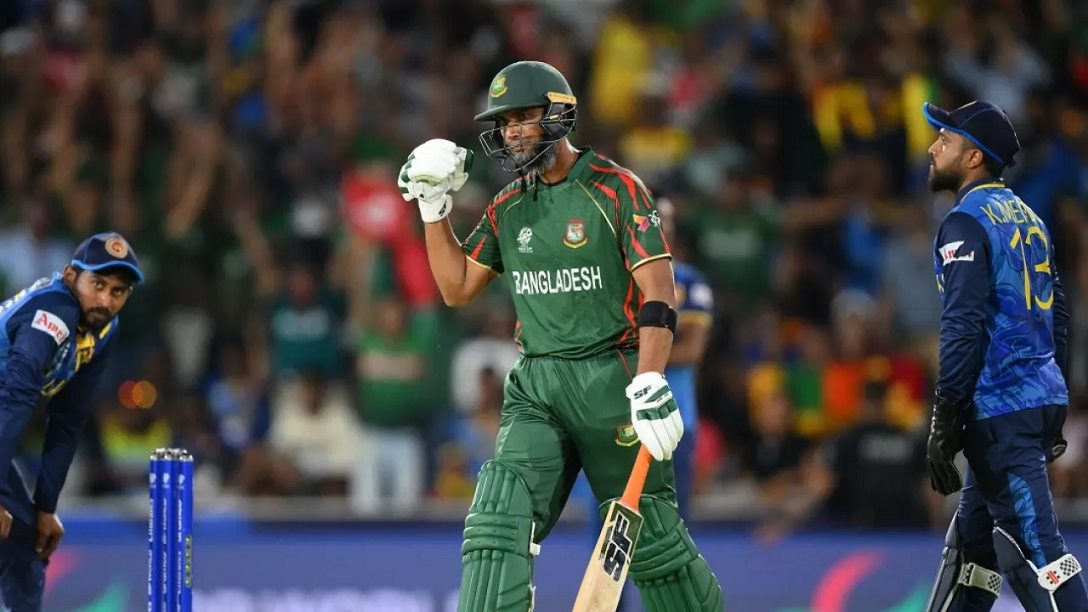
Nuwan Thushara’s last over brought Sri Lanka screaming back into the match,as he first bowled Rishad Hossain, and then nailed Taskin Ahmed in front of the stumps with a pinpoint swinging yorker. This left Bangladesh eight wickets down, with 12 runs still to get.
However, the experienced Mahmudullah was at the crease for Bangladesh, and despite some further nervy moments, pushed Bangladesh across the line off the last ball of the 19th over.
But this was a match chiefly decided by Bangladesh’s own outstanding bowling. Mustafizur Rahman was the best among them, using shorter lengths and his cutters efficiently, to claim figures of 3 for 17. Rishad Hossain’s three-for through the middle overs also kept Sri Lanka quiet.
Mustafizur was instrumental in Sri Lanka’s downward spiral through the middle overs, which culminated in a crash-and-burn end. Ultimately, their inability to find boundaries, or even rotate strike against good Bangladesh bowling resulted in their downfall. A score of 125 for 9 always seemed poor on a decent pitch, even if their bowlers made a match of it in the end.
Brief scores:
Bangladesh 125 for 8 in 19 overs (Towhid Hridoy 40, Litton Das 36; Dhanajaya de Silva 1-11, Nuwan Thushara 4-18, Wanidu Hasaranga 2-32, Matheesha Pathirana 1-27) beat Sri Lanka124 for 9 in 20 overs (Pathum Nissanka 47, Dhananjaya de Silva 21; Tanzim Hasan Sakib 1-24, Taskin Ahmed 2-25, Mustafizur Rahman 3-17, Rishad Hossain 3-22) by two wickets
[Cricinfo]


